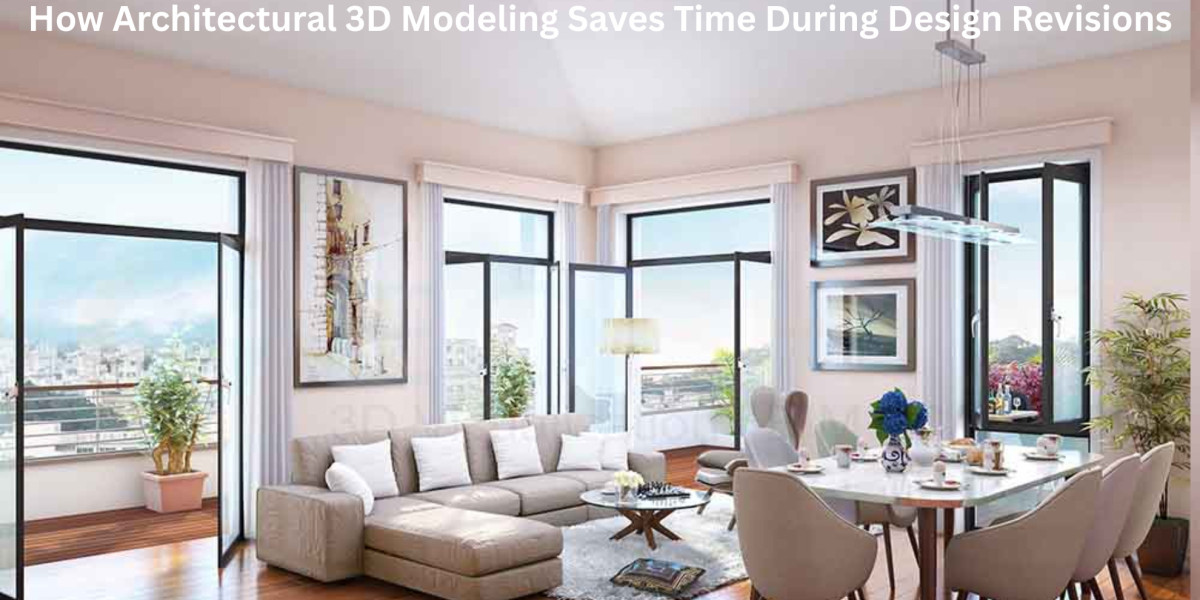In modern architectural workflows, the ability to quickly adapt and revise designs is more crucial than ever. With tighter deadlines, evolving client demands, and sustainability considerations, architects can no longer afford lengthy manual revision processes. Enter architectural 3D modeling—a game-changing technology that significantly reduces the time spent on design revisions while boosting accuracy and collaboration.
This blog explores how architectural 3D modeling streamlines revisions, integrates with architectural rendering services, and transforms traditional architecture into an efficient, future-ready process.
What Is Architectural 3D Modeling?
Unlike traditional 2D blueprints, 3D models offer depth, detail, and context, providing a complete visual understanding of a design even before the first brick is laid.
This visual clarity is not only useful during presentations but also instrumental in handling design revisions, making 3D architectural visualization services a vital part of any project lifecycle.
Why Traditional Revisions Waste Time
In the past, architects had to redraw entire plans when a client requested a simple change in layout or material. Every revision meant manual work, reinterpretation of dimensions, and often, re-coordination with contractors and stakeholders.
The lack of real-time visualization also meant clients had to rely on imagination or rough sketches, causing more back-and-forth and further delaying project timelines.
How Architectural 3D Modeling Speeds Up Revisions
1. Real-Time Design Visualization
One of the biggest time-saving benefits of 3D architectural visualization services is real-time design feedback. When changes are made to a 3D model, the updated design can be rendered and viewed almost immediately. Clients can visualize how their suggestions affect the overall design, eliminating the guesswork common in 2D plans.
Architects using architectural 3D modeling software can quickly swap materials, modify structures, or adjust layouts, making the revision process seamless and collaborative.
2. Quick Decision-Making with Architectural Rendering Services
Architectural rendering services help bring 3D models to life through photorealistic visuals. Whether it's lighting, texture, or furniture arrangement, renderings show exactly how a space will look and feel. When clients view these detailed images, they make quicker decisions, reducing endless feedback loops.
A leading architectural rendering company will often integrate design suggestions instantly into the rendering software, saving weeks in the feedback and revision process.
3. Integrating Floor Layout Changes with 3D Floor Plan Services
Using 3D floor plan services, architects can revise layouts in minutes. When a client requests moving a wall or changing room dimensions, the updated floor plan and 3D view are generated simultaneously. Architectural floor plan rendering also helps stakeholders visualize spatial relationships between rooms, reducing the chance of rework during construction.
4. Enhancing Interior Design Revisions with Interior Design Rendering Services
Interior aesthetics often undergo multiple changes during the design process. With interior design rendering services, architects and designers can simulate different wall colors, lighting schemes, furniture placements, and textures in real-time.
This not only helps clients finalize decisions faster but also ensures the design intent is preserved across revisions. By integrating architectural 3D modeling with interior design tools, revisions become fluid, intuitive, and quicker to implement.
5. Faster Exterior Updates
Revisions in building facades, rooflines, landscaping, or materials can be time-consuming without visual references. 3D exterior rendering services enable instant visualization of changes to a structure’s outside appearance. This is especially helpful for real estate developers, city planners, and architects working on large-scale commercial projects.
Rather than imagining how brick will look instead of concrete, clients can view side-by-side comparisons in a 3D architectural visualization, speeding up design decisions and avoiding delays during planning approval.
6. Animated Walkthroughs for Real-Time Feedback Using Architectural 3D Walkthrough
An Architectural 3D walkthrough provides a virtual tour of a proposed space, helping clients and stakeholders explore every corner. When revisions are requested, the walkthrough can be updated instantly to reflect the new changes.
Clients can visualize transitions between rooms, understand lighting impact at different times of day, and spot issues early. This immersive approach dramatically reduces late-stage design revisions and ensures that all parties are aligned from the start.
7. Using Architecture 3D Animation for Quick Design Communication
Architecture 3D animation brings movement into static models. Whether it's simulating how sunlight travels through a building or how people move through a space, animations help convey complex ideas quickly.
When design revisions are required, these animations can be edited to include the updates, providing a clear, concise, and fast method to communicate design iterations without long meetings or confusing diagrams.
Collaboration Made Easy with Architectural Rendering Companies
A professional architectural rendering company uses the latest tools like BIM (Building Information Modeling), AI-based simulations, and real-time rendering platforms. These technologies allow multiple teams—architects, engineers, interior designers, and clients—to collaborate on a single 3D model.
With cloud-based models and 3D architectural visualization services, revisions made by one team are immediately visible to others. This transparency speeds up the coordination process, reduces miscommunication, and allows for faster turnaround times on design revisions.
Case Study: Architectural 3D Modeling in Commercial Projects
A commercial developer in Mumbai needed rapid approvals for a mixed-use project. Using 3D exterior rendering services and 3D floor plan services, the architectural team was able to present multiple revisions within days.
Stakeholders quickly finalized changes thanks to interior design rendering services, and the client was able to secure municipal approval within the first submission round. The project timeline was cut by nearly 40%, and construction began ahead of schedule—all due to the efficiency of architectural 3D modeling.
The Cost-Saving Power of Speed
Time is money in the architecture world. Revisions that would traditionally take weeks can now be completed in hours using architectural 3D modeling. This faster turnaround leads to:
Lower labor costs
Quicker client approvals
Fewer construction errors
Reduced software and printing overheads
Ultimately, it’s not just about visual appeal. The combination of architectural rendering services, Architecture 3D animation, and 3D modeling tools leads to real business value.
Conclusion: The Future of Revisions Lies in 3D
As clients become more tech-savvy and demand faster project cycles, architectural firms must embrace tools that offer speed, precision, and collaboration. Architectural 3D modeling is no longer a luxury—it’s an essential asset in handling design revisions effectively.
From architectural floor plan rendering to Architectural 3D walkthroughs, each layer of visualization shortens revision cycles and improves client satisfaction. For firms seeking a competitive edge, partnering with a reliable architectural rendering company is the smart move.








